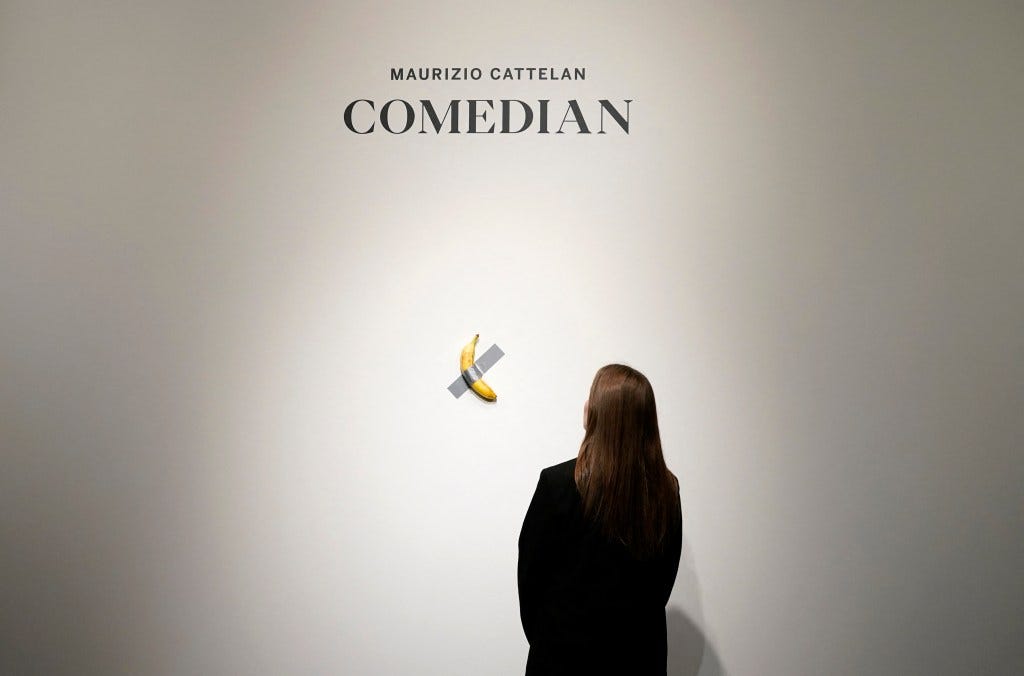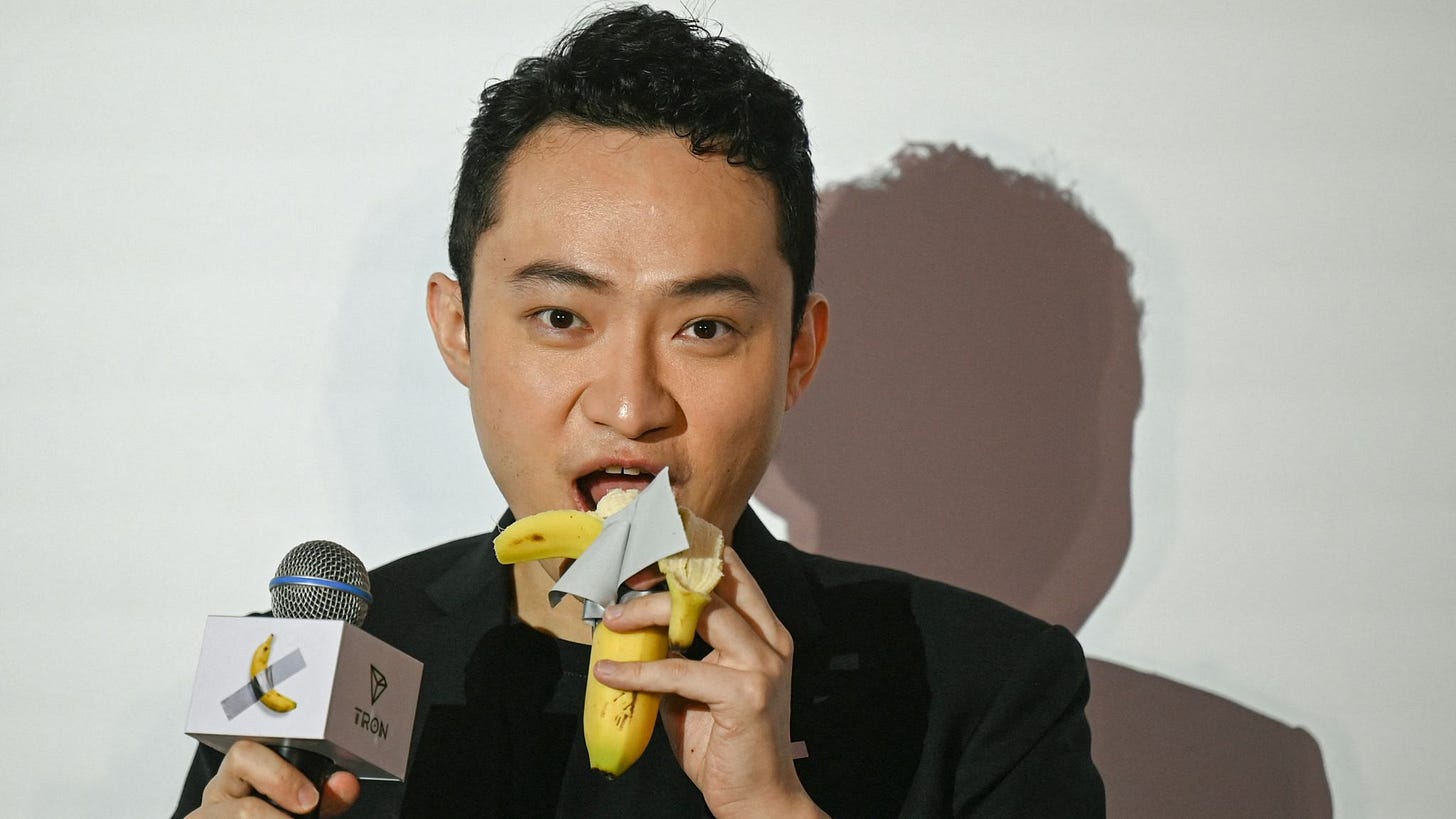In November 2024, Sotheby’s auctioned Maurizio Cattelan’s Comedian–a literal banana taped onto a canvas–for $6.2 million. The lucky buyer–a crypto entrepreneur named Justin Sun–outbid six competitors and proceeded to eat the banana publicly. Why would anyone do something like this? Why would you spend more money on a banana than 99.99% of the population will ever have?
This is an example of conspicuous consumption—the idea that we buy things not just for their utility or enjoyment, but to signal wealth and status. The value isn’t in the banana itself; it’s in the statement it makes to others.
There are countless examples of conspicuous consumption: from expensive cars and lavish homes to jewelry and ornate Chinese vases. In fact, conspicuous consumption is as old as the Western canon of art. From the Renaissance onward, wealthy collectors have commissioned extravagant artworks—not just for their beauty, but to showcase their splendor and magnificence.
But Justin Sun’s conspicuous consumption came with a twist. Instead of posing a mixed signal and making us wonder whether he truly liked the artwork or simply wanted to show off, it was a deliberate, comedic display of wealth. By eating the banana, Sun made it clear that the artwork’s physical form was irrelevant—the true value lay in the act of buying it, the spectacle it created, and the status it conferred. His performance wasn’t about owning Comedian but about proving he could afford to consume it, both literally and financially, without hesitation.
The equivalent of this would be purchasing a mansion only to set it on fire; an Aston Martin only to drive it into the river; or a Birkin bag onto to throw it into the bin. The value is all in the ability to purchase and the act of destruction.
Should we want more of this? Probably not. There’s some economic utility in the money Sun transferred over to the artist, Maurizio Cattelan. Perhaps that sum will allow him to focus on his technique and create actual art. But if the goal was to support artists, there are far better ways to do so than turning “philanthropy” into a publicity stunt.
I’d like to see more money flow toward artists who need it—those who could use the support to take creative risks and push their work further. But if we’re serious about that, we should focus on maximizing impact rather than maximizing spectacle.
Irrationally yours,
Dan Ariely














